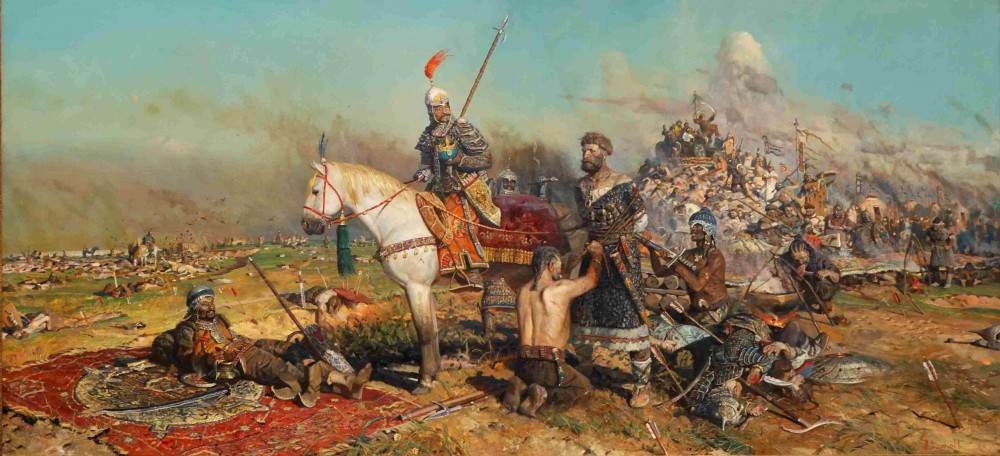The first devastating tragedy in Hungarian history: The Mongol invasion
The Kingdom of Hungary has seen some prosperous years in the 12th and 13th centuries, until the Mongol Empire set out to occupy first Eastern and Central Europe, and move further west from there, laying waste to Hungary. This is a tragic marking point in Hungarian history (in European too), one that is considered to be the first devastating challenge that this nation was faced with.
The Mongol invasion throughout the 13th century affected not just the Kingdom of Hungary, but almost all of Central and Eastern Europe, as the Golden Horde laid waste to Poland, the Czech lands, the Kingdom of Croatia, Bulgaria, and even Austria. Although there were three Mongol invasions of Europe, it was only the first that left the Kingdom of Hungary in ruins. The second was repelled by the Hungarians, but still affected gravely other countries, such as Poland or Serbia, while the Mongols did not dare to attack Hungary for the third time.

Mounted warriors (probably Mongols) pursue enemies. Illustration of Rashid-ad-Din’s Gami’ at-tawarih Tabriz, 1st quarter of 14th century
The Mongols started their invasive attacks and raids in the 1230’s, already having sent word to King Béla IV in 1237 through a Hungarian friar, named Julianus, demanding Béla’s surrender of the crown and the kingdom. However, Béla gave no answer to this, nor to other messages that arrived in the following years.
When the Horde finally arrived near the Hungarian border, it took them little to no time to start looting bigger cities.
Béla, despite the nudges of the nobility to engage the Mongols in open battle, tried to postpone a face-to-face attack out on the field against the Golden Horde.
However, battle could not be avoided, and he only gathered the Hungarian army when the Horde was seemingly retreating and moving on. The nobility ridiculed Béla for his cowardly cautiousness, belittling the Golden Horde’s force and intentions.
The Hungarians and Mongols clashed in battle on
Battle on the bridge over river SajóApril 10, 1241, at Mohi. The Hungarians managed to cash in a small victory on the bridge over the Sajó river, but the royal army was eventually turned into dust, as the Mongols had better military equipment and experience. It must be noted that the Hungarians were not those frightening nomadic military fighters as they were in the 10th century and the army consisted mostly of nobility, of knights. Adding to this, the Mongols were employing some of the ancient Hungarian fighting tactics that Europe was not accustomed to anymore.
After the serious loss suffered on the Hungarian side at the Battle of Mohi, there was no one left to stop the Mongols from looting and destroying the whole kingdom. They have occupied first the Great Hungarian Plains, moving on to the regions falling north of the Carpathian Mountains, even occupying territories in Transylvania. Those who showed resistance were slaughtered mercilessly, but those who were willing to comply were forced into servitude in the Mongolian army.
The surviving Hungarian population ran for cover to fortresses, forests and marshes, hiding there for months.
Fortresses presented a difficulty to the Mongols, which was eventually what saved the kingdom in the second wave: learning from the first invasion, the Hungarians started building fortresses. Fortified cities were hard to take if taken at all, which served as a good lesson for the later generations.
The Mongol invasion in Hungary in Chronica Hungarorum by Johannes de ThuróczyThe first city to fall under their siege was Pest (Budapest was not yet united back then). Pest was quickly followed by Esztergom, which served as the capital back then. After the siege of Esztergom on Christmas Day 1241, the capital was moved to Buda.
Upon witnessing the ruin of his kingdom, Béla flew to Dalmatia, from where he moved further to Trogir. Even though the whole of Europe was in despair and fear of the Mongols after word spread about the wreckage of Hungary, no one provided real support to Béla when he asked for help from the Pope, the Holy Roman Empire and the king of France.
After the flight of Béla, Hungary became a darughachi under the leadership of Orda.
Terror reigned over Hungary for a year, finally ending with the retreat of the Mongol forces.
It is still debated why the Golden Horde retreated from Central Europe in the spring of 1242, as some historians argue that the death of Ögedei Khan on December 1, 1241 shook the whole Mongol Empire, others reason that the weather conditions during autumn and winter were unusual for the Mongol army and they could not adapt to it, and there are yet others who claim that the sieges of fortified cities were too costly and brought little to the Mongol treasury.
featured image: Pavel Ryzhenko, “Kalka”: the Mongol Horde’s victory over Kyivan Rus at the Battle of Kalka (c. 1223)
Source: Daily News Hungary
please make a donation here
Hot news
Foreign workers at Wolt Hungary: courier and restaurant manager chime in – and they are not happy
Hungarian FM Szijjártó: We won two battles in Brussels
Bizarre developments: Orbán cabinet now targets rainbow-coloured items!
Hungarian defence minister: Most important thing is peace
Huge honour: 3 Budapest hotels in Europe top 10!
Traffic changes in Budapest due to political protest on Friday and Saturday





1 Comment
The strategy of the Hungarian Army at Sajo was a terrible. They surrounded themselves with waterways which stopped any form of retreat or the ability to outflank the enemy. Poor planning and they wasted their superiority in numbers.